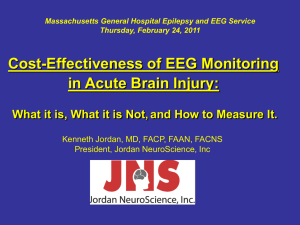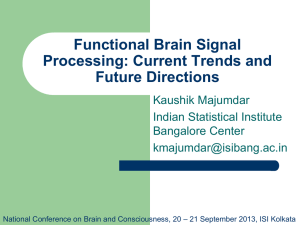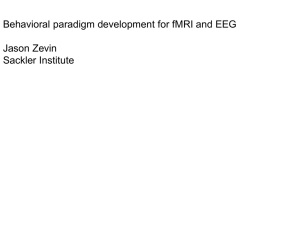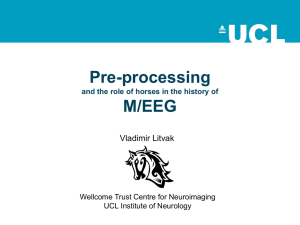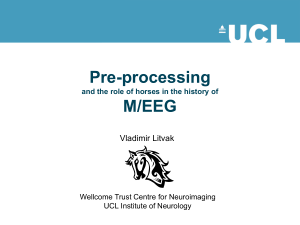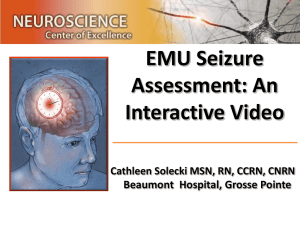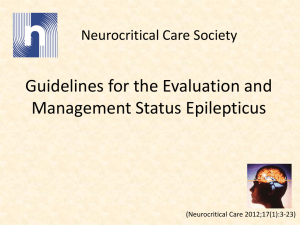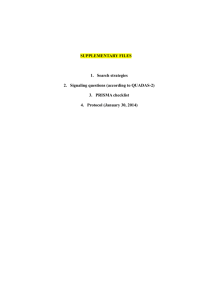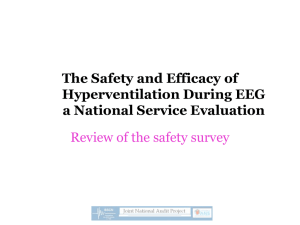The role of continuous EEG in therapeutic hypothermia
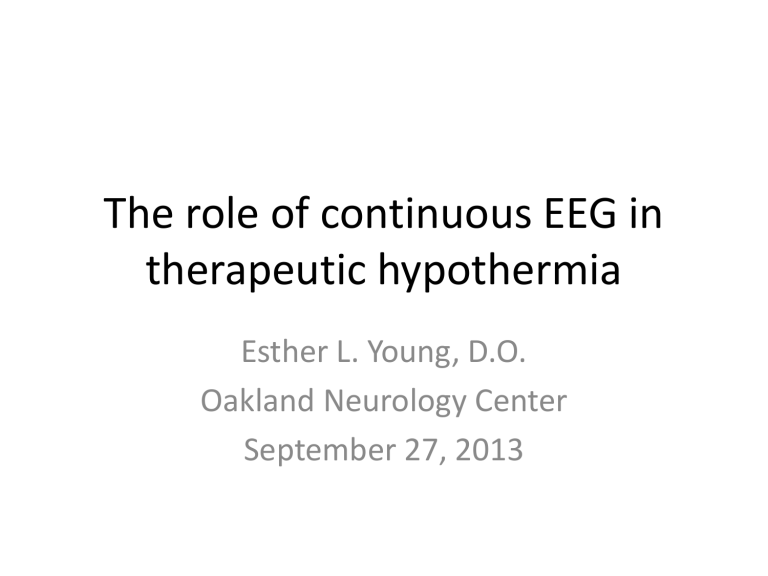
The role of continuous EEG in therapeutic hypothermia
Esther L. Young, D.O.
Oakland Neurology Center
September 27, 2013
Role of EEG
• EEG has been used to assist in determining prognosis following cardiac arrest since the
1960s.
– EEG rating scale can predict neurologic outcome with an accuracy of 80%
• Malignant EEG patterns: myoclonus with EEG correlate, a nonreactive background, burst suppression and status epilepticus
• Better prognosis: diffuse slow-wave activity
Therapeutic hypothermia
• Therapeutic hypothermia has been shown to improve neurologic outcome after out-ofhospital cardiac arrest due to ventricular fibrillation and is the standard of care.
• Protective hypothermia lowers a patient’s body temperature in order to help reduce the risk of ischemic injury to tissue following a period of insufficient blood flow
Seizures
• Hypothermia has antiepileptic effects, yet seizures in cardiac arrest patients can occur despite therapeutic hypothermia.
• The risk of seizures may increase during rewarming
• Continuous EEG monitoring has been recommended during therapeutic hypothermia to provide prognostic information and monitor for subclinical seizures and nonconvulsive status epilepticus
– Seizures and nonconvulsive status epilepticus have been reported at a rate of 10-12% and have been shown to be an independent risk factor for mortality
EEG grading system for cEEG findings following cardiac arrest
• Mild (grade 1)
– Excess beta, theta slowing, anesthetic pattern
• Moderate (grade 2)
– Diffuse or focal delta slowing, SIRPIDS, ELAE, spindle coma, interictal epileptiform discharges, generalized triphasic waves, FIRDA, TIRDA, OIRDA, PLED
• Severe (grade 3)
– Burst suppression pattern, low voltage outpt pattern, alpha/theta coma, focal or generalized seizures, nonreactive to stimuli, GPED, status epilepticus
FIRDA
PLED
Triphasic waves
Burst suppression
Alpha coma
GPED
Continuous EEG in therapeutic hypothermia after cardiac arrest
• Retrospective study of all patients undergoing cEEG with hypothermia after cardiac arrest
– Evaluate the prognostic significance of EEG abnormalities occurring during the course of therapeutic hypothermia and warming.
– Used the EEG grading system
• 54 patients treated under TH protocol included
– Cooled for 24 hours
– cEEG monitoring initiated after hypothermia established and continued until normothermia for a minimum of 2 hours
EEG grade during 3 stages of therapeutic hypothermia
• EEG TH rewarming normothermia grade
1
2
3
11%
56%
33%
13%
57%
30%
26%
43%
21%
Results
• Good neurologic outcome at hospital discharge was seen in 33 (61%) patients.
• A total of 21 (39%) had a poor neurologic outcome
• 19 (35%) died during the hospitalization
• EEG severity during TH and NT had a strong association with neurologic outcome
– A grade 3 EEG during TH and NT correlated with poor neurologic outcome
• Of patients with a poor neurologic outcome, the majority (16/21) showed a grade 3 pattern during TH and 16/19 patients who died had a grade 3 EEG
• None of the patients with seizures or status epilepticus achieved good outcome despite treatment
Results
• There was a trend favoring an association between the evolution of the EEG background during TH and prognosis
– 9 patients showed improvement in EEG severity grade after rewarming
• 8 had a good outcome
– Of the 4 patients with worsening of the EEG, 3 had a poor outcome
• The 3 showing worsening to a grade 3 EEG pattern died
• The patient showing progressing to a maximum severity of grade 2 had a good recovery
Discussion
• EEG abnormalities graded as severe based on the
EEG severity grading system were associated with poor outcome
– A benign EEG (grade 1) during hypothermia and NT uniformly predicted good recovery
– Moderate EEG severity (grade 2) showed less predictive value
– The change of cEEG findings during the course of THrewarming-NT tended to mirror functional outcome
• ¾ of patients had the same EEG grade through THrewarming-NT
Discussion
• EEG findings were one of several facotrs used to estimate prognosis and were never considered in isolation
• Small cohort size
• Is “spot-check” EEG as good as cEEG? (majority of patients did not have a change in grade of EEG)
• Clear benefit from aggressively treating identified seizures needs to be established if cEEG is to be recommended for the indication of seizure detection in this population



